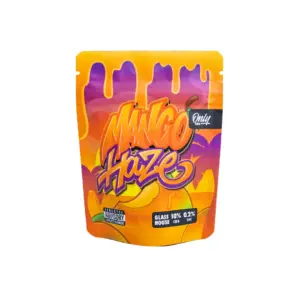Whether for its religious connotation or its significant presence within Rastafarian culture, you've surely seen the ever-iconic Lion of Judah.
More than just a graphic representation of a feline, the Lion of Judah holds an interesting history worth exploring to understand its origins, its characteristics, and its influence on Jamaican culture.
If you'd like to learn more about the Lion of Judah, we invite you to continue reading to uncover all the questions in this article.
History of the Lion of Judah
In the Christian world, it's very common to mention the enigmatic Lion of the Tribe of Judah. This is because he was immortalized in the Christian Bible, specifically in the Book of Genesis.
In fact, its significance in human history is very relevant, and historical records of the Lion of Judah can be found in Judaism.
Jacob, who founded the tribe of Judah, used the lion as a symbol, due to the characteristics that surround this animal and the destiny he prophesied for his nascent people.
The Lion of Judah is credited with being the king of all animals for his incredible strength, as well as being a symbol of dignity, triumph, struggle, and virility.
Even the God of the Jews is compared to a lion. This affirmation reflects his power and capacity for justice, a very important element that led to the Lion of Judah becoming the symbol of all Jerusalem.
The historical origin of the Lion of Judah is so important that it is even used in Christianity to represent Jesus of Nazareth himself.
This is partly due to the symbol of strength and power for fighting, which involves the Lion of Judah as a species of the animal world.
Biblical references to the Lion of Judah can be found in the books of Genesis 49:9-10 and Revelation 5:5.
Characteristics of the Lion of Judah
In some cultures around the world, the figure of the lion is commonly used as a symbol of the diverse values of this creature of the animal kingdom, to which great strength, valor, bravery, and nobility are attributed.
Therefore, representations of the Lion of Judah can be found on shields, armor, flags and even on the coats of arms of kings.
Another very interesting feature of the historical records of the Lion of Judah can be found in Africa, specifically in Ethiopia.
There, we can highlight its presence dating back to the 5th century, specifically in the book Kebra Nagast, relating to the link between the famous Queen of Sheba and King Solomon.
Not in vain, in 1897, an Ethiopian flag emerged with the Lion of Judah in the center of its green, yellow and red stripes.
The presence of the Lion of Judah is very significant, and its influence can be seen in other parts of the world. This is the case in the Caribbean Islands and its adoption by the Rastafarian culture.
Lion of Judah in Jamaican culture
If there is one place in the world where we can observe the marked influence of the Lion of Judah on culture, we have to think of the Caribbean island of Jamaica.
Jamaica is an English-speaking island country that has traditionally been known as the birthplace of reggae.
Many refer to the significance of the Lion of Judah in Jamaican culture as a landmark of great importance due to its presence in a third-world natural paradise, which can be compared to the biblical Eden itself.
That place where Jews, Arabs, and Africans managed to establish themselves as a harmonious society.
We can say that Jamaican culture is an American representation of the so-called Horn of Africa, emerging from a turbulent mix of population migrations.
This gave rise to the formation of a Rastafarian nation where the Lion of Judah was adopted as one of its great icons of cultural identity.
To talk about Jamaican culture and the Lion of Judah, we must delve into the well-known Rastafarian movement. This movement emerged in the 1930s and is a combination of thoughts and beliefs.
Although the origin of the Rastafarian movement is well-defined, it continues to gain significant traction, being widely recognized for its use of the Lion of Judah symbol.
Rastas, as members of this Jamaican cultural community are known, use marijuana as a tool to foster ideas and spiritual connection.
Members of Jamaican culture are proud of their beliefs and seek to be easily identified.
For this reason, they don't hesitate to use elements such as flags or hats in the colors of Jamaica, as well as the marijuana leaf and the ever-present Lion of Judah.
In fact, one of the symbols most favored by Rastas to have permanently tattooed on their skin is the Lion of Judah.
But what are the reasons that lead the inhabitants of Jamaica to mark their bodies with the Lion of Judah?
One of the reasons is the link between Jamaica and Ethiopia, which is why they use the Lion of Judah that was used on the Ethiopian flag of Haile Selassie I.
The lion as an animal species is characteristic of Africa and is used to represent the strength and, in general, the power of the so-called dark continent.
The meaning of the Lion of Judah symbol is not limited to the representation of a brave and strong animal native to Zion, but it also holds a deep spiritual connection. Therefore, the Lion of Judah represents divine vigilance and protection.
In conclusion, the Lion of Judah represents the unbreakable bond between Africa, Jamaica, and the struggle for ideals that aim to achieve a much better world.

















